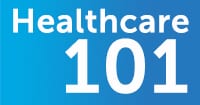Healthcare 101: PPOs vs. High Deductible Plans
June 16, 2014

New healthcare regulations have caused major changes in how employers offer—and how employees choose—health insurance. Now, people have more say in how they want to pay for healthcare and what kind of coverage they prefer. It can be confusing to sift through the options, and it’s important to understand the differences between plans.
Two popular choices are preferred provider organizations (PPOs) and high-deductible health plans (HDHPs). Both offer coverage that satisfies the requirements of the Affordable Care Act, but there are major differences between the two. Today, we explain and explore these options.
Preferred provider organization
Under a PPO plan, your insurer maintains a network of doctors, hospitals and healthcare providers that agree to provide care for you at reduced costs. Your insurance company negotiates the best price for healthcare services on your behalf — and as long as you use a provider in your network, you benefit from those discounts.
Pros:
- Lower deductibles – A deductible is the amount you must pay out-of-pocket before benefits kick in. If you know that you have some medical expenses coming up, paying more monthly for a lower deductible at the time of service might make more sense.
- Copays – You only pay a small copayment for a medical office visit.
Cons:
- High monthly cost – Generally, these plans have a higher premium. If you don’t have ongoing medical issues, the higher cost might not make sense.
- Limited to in-network providers – In order to see real savings, you must use a provider that is in the PPO network. Using an out-of-network provider means higher costs and possibly more trouble getting treatment costs approved and reimbursed.
High-deductible health plans
These plans carry a significantly higher deductible than other insurance options, although they are typically made available with a Health Savings Account (HSA) so you can better plan and budget for healthcare expenses. However, you will be required to pay more upfront costs to a provider until your deductible is met. With this type of plan, it’s ideal to be savvy about medical expenses. One cost-saving option is visiting an urgent care center instead of an emergency department for non-life-threatening health issues.
Pros:
- Lower costs over the year – Money that may have gone to premiums (and may have been lost at the end of the year) stays in your pocket. For healthy individuals, this can be a major benefit.
- Access to health savings account (HSA) – Only available to those with an HDHP, these tax-free, interest-earning savings accounts are a great way to set aside money for possible medical needs. Plus, unlike regular insurance premiums, the money you put into this account rolls over from year to year.
Cons:
- Risks of putting off treatment – Higher upfront costs could cause some people to wait too long to get treatment for issues that need attention, which can mean longer recovery times and higher overall costs.
- No copay benefit – You pay all costs for care up front until your deductible is met.
If you have further questions, be sure to reach out to your HR department, financial planner or other trusted healthcare resource to help weigh your options. And remember that for a variety of urgent care and health check needs, CareSpot is here to help!
